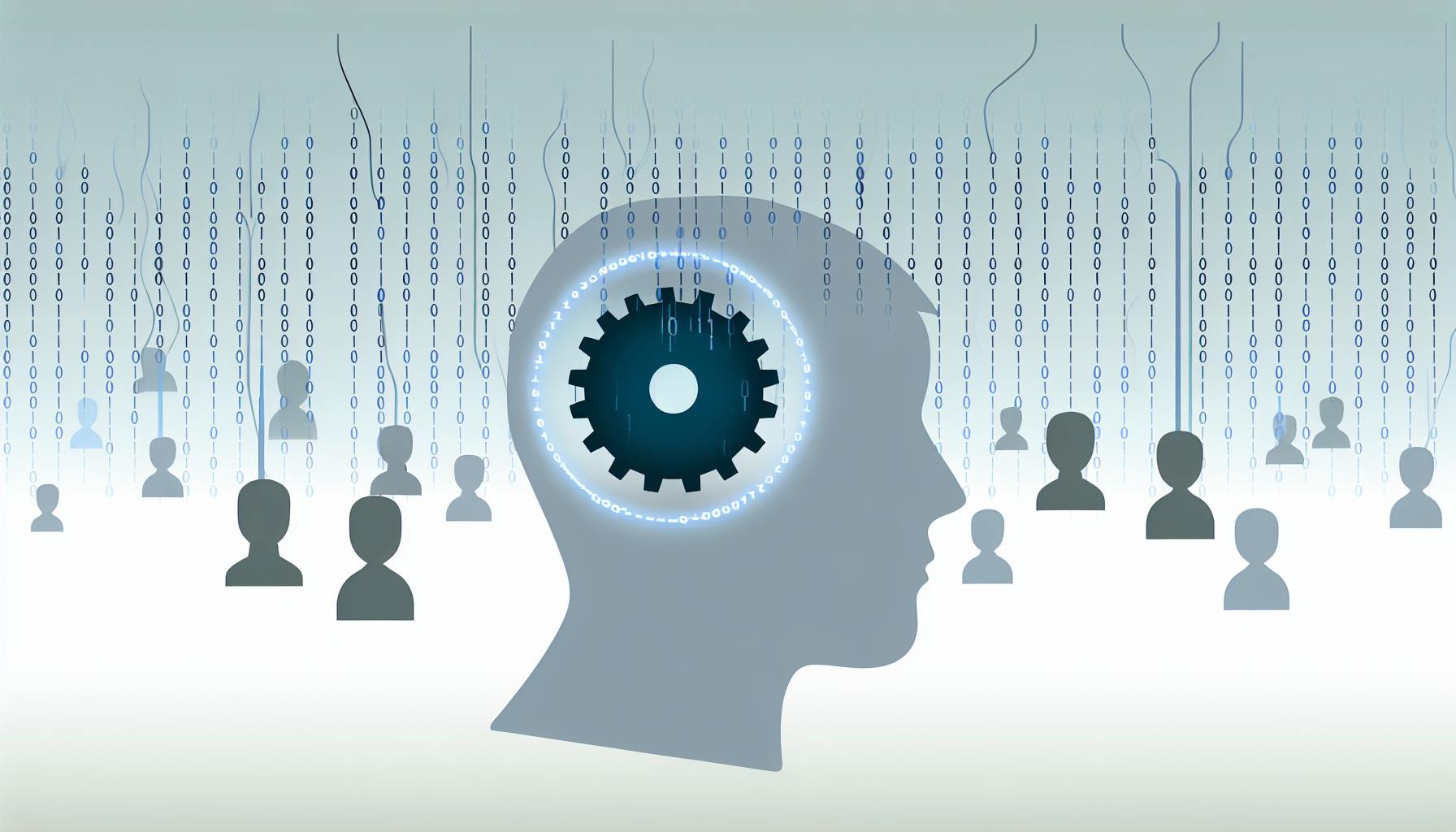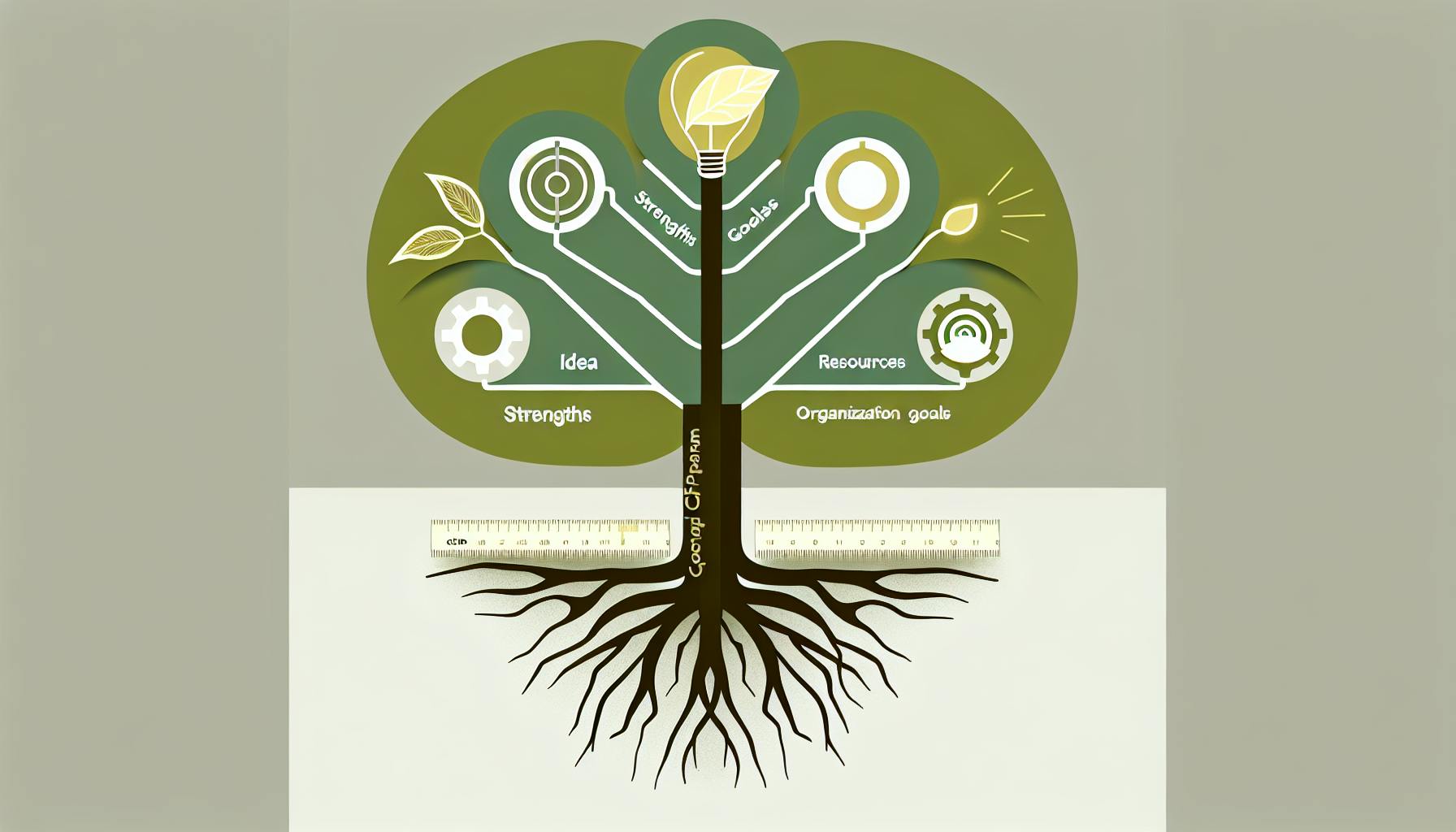We can all agree that equality, equity and inclusion are vital for any organization.
By integrating thoughtful equality metrics into HR dashboards, organizations can gain crucial insights to guide policy and drive meaningful change.
In this article, we'll explore the types of equality metrics to monitor, best practices for implementation, and how to analyze the data to secure leadership support for equality initiatives.
Introduction to Equality Metrics in HR Dashboards
Equality and equity are foundational principles for creating fair and inclusive workplaces. Integrating metrics around equality into HR dashboards provides data-driven insights to inform policies and practices that live up to these ideals.
Understanding Equality vs Equity in HR
- Equality refers to treating all employees the same regardless of individual differences. Equity refers to leveling the playing field to account for barriers or disadvantages some groups face.
- While equality is about uniform treatment, equity aims to ensure fair opportunities and outcomes. HR must pursue both to create a just workplace.
- Metrics should track how policies impact different demographic groups to uncover inequities and barriers to equality.
The Importance of Equality Metrics for Decision-Making
- Equality metrics guide leaders in making informed decisions that promote equal access, treatment, and opportunity.
- Analyzing metrics by gender, race, age, etc. reveals potential biases and barriers embedded in current practices.
- Leaders can use insights from equality metrics to shape policies that eliminate discriminatory impacts and empower all talent.
Types of Equality Monitored in HR
- Gender equality metrics track gaps in hiring, promotion rates, compensation, and retention between men and women.
- Racial equality metrics analyze the same indicators across racial groups to identify disparities.
- Social equality metrics examine class and socioeconomic differences among employees.
- Monitoring various facets of equality enables tailored initiatives to drive systemic change.
Thoughtful tracking and analysis of equality metrics empowers organizations to live up to inclusive ideals and create workplaces where all talent thrives.
What do mean by equality?
Equality refers to the state of being equal in status, rights, and opportunities. Some key aspects of equality include:
Types of Equality
There are a few main types of equality:
-
Equality of opportunity - People have the same chances to access education, employment, healthcare, etc regardless of gender, race, religion, etc.
-
Legal equality - Everyone has equality before the law and equal protection under the law without discrimination.
-
Political equality - All citizens have equal rights when participating in politics or running for political office.
-
Social equality - All people are equal in social settings and interpersonal relationships without hierarchies.
-
Economic equality - Resources, wealth, and income are distributed equally or fairly among citizens.
Importance of Equality
Equality is crucial for:
- Protecting human rights and dignity
- Reducing discrimination
- Promoting fairness and justice
- Fostering social cohesion and unity
- Facilitating economic prosperity
In summary, equality is a core value for democratic societies. It enables all individuals to fully participate in social, political, and economic life regardless of identities or backgrounds. Metrics tracking different aspects of equality can reveal progress and gaps across different segments of the population.
What are the 3 types of equality?
Equality is a complex concept with multiple dimensions. Broadly, there are three main types of equality that are often discussed:
Political Equality
Political equality refers to equality in terms of rights, responsibilities, and participation in the political process. This includes equal rights to vote, run for office, express political opinions, assemble, and petition the government. Achieving political equality often involves dismantling legal and social barriers that prevent marginalized groups from fully participating.
Social Equality
Social equality focuses on equality of status, rights, and opportunities across all social groups regardless of demographics. This means eliminating discrimination, prejudice, and bias so all people can freely participate in society without facing disadvantages. Social equality is closely tied to concepts of diversity, inclusion, and social justice.
Economic Equality
Economic equality centers on fair and equitable distribution of economic resources, wealth, income, and opportunities. This dimension examines disparities between socioeconomic classes as well as differences in standards of living. Policies aimed at economic equality often involve redistributing resources to provide basic needs and ensure equal chances to succeed.
While interrelated, these three spheres highlight different facets of equality that collectively contribute to a fair, just and inclusive society. Understanding these distinctions can help inform policy decisions and organizational practices.
What is a example of equality?
Equality means treating everyone the same and giving everyone access to the same opportunities. Here is an example that illustrates the difference between equality and equity:
For example, equality would be giving everyone the same type of ladder to pick mangoes at the top of a tree. This treats everyone equally by providing the same ladder, but it does not take into account that people have different needs and abilities.
Equity would be realizing that not everyone can use the same type of ladder and providing another way for them to reach the mangoes at the top of the tree. This could mean:
- Providing a taller ladder for shorter people
- Providing a ladder with a ramp for someone in a wheelchair
- Bringing the mangoes lower in the tree so more people can reach them
So while equality gives everyone the same thing, equity takes into account differences and provides accommodations and support so that everyone has access to the same opportunities.
The goal of equity is to ensure fairness and justice, not just equal treatment. This example with the mangoes illustrates that sometimes equal treatment is not enough to provide truly equal access and opportunity. Equity recognizes diversity in needs and abilities and aims to address those differences.
What is equality and why is it important?
Equality refers to the state of being equal in status, rights, and opportunities. It is an important principle in human rights and ensures fair and just treatment for all individuals regardless of race, gender, age, ability, religion, ethnicity, or sexual orientation.
Some key reasons why equality matters:
-
Promotes human dignity and empowerment: Treating all human beings as equal upholds their basic dignity and empowers them to fully participate in society.
-
Drives economic growth: Equal access to jobs and education allows people to fully use their talents and skills, fueling innovation and economic development.
-
Strengthens communities: Equality brings people together across differences and reduces marginalization of minority groups, leading to more cohesive communities.
-
Upholds justice: Discrimination and unfair treatment undermine justice. Equality before the law and in policies ensures protections and recourse for all.
-
Reflects ethical values: The principle of equality aligns with ethical values of respect, fairness, and concern for human welfare.
In the workplace, equality in areas like hiring, compensation, promotions, and professional development is critical. Equality metrics on HR dashboards provide data to track progress on equality and inform evidence-based decisions and policies.
sbb-itb-34a8e9f
Equality Metrics and Human Rights Compliance
Equality metrics in HR dashboards can help organizations ensure compliance with human rights laws and principles. By tracking metrics related to equal employment opportunities, fair compensation, and inclusion, organizations can identify potential issues and proactively address them.
Employment Equality and Equal Rights Legislation
HR dashboards allow organizations to monitor metrics connected to employment equality laws prohibiting workplace discrimination. Relevant metrics include:
- Percentage of employees from minority groups
- Pay equity ratios across gender, race, and other protected classes
- Promotion rates for protected groups
- Inclusion index scores from employee surveys
Tracking these metrics ensures organizations comply with equal opportunity employment laws and uphold equal rights in practice. Significant gaps may indicate issues needing intervention through updated policies, training programs, or process changes.
Equality Before the Law: Metrics for Legal Compliance
The principle of equality before the law means all individuals have equal rights without discrimination based on protected characteristics. HR dashboards present data to assess compliance, such as:
- Disciplinary action rates segmented across employee demographics
- Employee turnover and retention rates for protected groups
- Representation at all levels mirroring broader demographics
- Survey scores on fair treatment perceptions across the employee lifecycle
Organizations must ensure equal application of policies. Metrics revealing discrepancies can drive initiatives like bias mitigation training for managers or policy adjustments to uphold equality before the law.
In summary, equality metrics in HR dashboards empower organizations to identify potential issues early and implement corrective measures, ensuring legal compliance and alignment with human rights standards. The ability to track inclusion, equity, and fairness metrics is key for organizations to walk the talk when it comes to upholding equal rights and opportunities.
Integrating Diversity and Inclusion into Equality Metrics
Equality metrics provide critical insights into whether policies and practices across an organization offer truly equal opportunities and outcomes. However, focusing solely on equality risks overlooking other facets of a diverse, equitable, and inclusive workplace. Integrating diversity and inclusion metrics into HR dashboards alongside equality measures provides a more comprehensive view.
Diversity Metrics as a Subset of Equality
Diversity refers specifically to the demographic variability within a workforce. Tracking representation across different identity groups (gender, race/ethnicity, age, disability status, veteran status, etc.) reveals workforce composition.
Diversity metrics act as a subset of equality, indicating whether equal access to opportunities exists across all groups. For example, tracking promotion rates by gender checks if equality of advancement opportunity exists between men and women.
Benefits of monitoring both diversity and equality in HR dashboards:
- Ensures recruitment and hiring practices provide equal access to employment
- Identifies any demographic groups disadvantaged in compensation, promotions, or career development
- Allows for targeted initiatives to resolve inequality issues
- Provides insights to fuel innovation from diverse perspectives
Inclusion Initiatives and Equality of Outcome
Inclusion refers to a sense of belonging, where all employees feel valued, respected, and able to participate fully. Inclusion initiatives aim to cultivate this culture.
Tracking inclusion metrics (sense of belonging scores, participation in ERGs, etc.) alongside equality metrics verifies that policies lead to intended equality of outcomes. Employees across all demographics should feel equally included.
Measuring inclusion reveals whether intended equality translates into realized equity of experience. This allows organizations to course-correct as needed to foster a workplace where everyone thrives.
Equality in Political Science and Organizational Policy
Equality is a complex concept that has been extensively examined in political science. When incorporated thoughtfully into organizational policies, political science theories of equality can help create more fair, just, and equitable workplaces.
Incorporating Political Science Theories into HR Policies
Political scientists make a key distinction between equality of opportunity and equality of outcome. Equality of opportunity means providing the same chances for advancement and success to all people. Equality of outcome focuses on trying to make end results the same for all people.
Organizations should strive for equality of opportunity in their HR policies. Some ways to promote equal opportunity include:
- Having clear, transparent promotion processes based on merit and performance, not demographic factors
- Ensuring recruiting and hiring practices reduce biases and stereotypes
- Accommodating disabilities to provide the same opportunities
- Offering equitable access to training and development programs
Promoting equal opportunity enables people to advance based on their talents and effort, not unchangeable characteristics. This creates a fairer system aligned with organizational values.
Policy Development Informed by Equality Metrics
Organizations can leverage equality metrics and analytics to shape policy:
- Pay equity analysis - Evaluate compensation differences between groups. Address inequities.
- Diversity metrics - Track demographic diversity at various levels. Set goals to improve.
- Inclusion surveys - Measure sentiments of belonging. Improve areas of weakness.
- Representation data - Analyze promotions and turnover by group. Remove roadblocks.
As metrics reveal areas needing improvement, organizations can update policies and practices. For example, a technology company identified lower promotion rates for women in engineering roles. This prompted launching a women's leadership development program.
Equality metrics empower data-driven policy changes for fairness. They highlight specific areas to target when translating equality principles into practice.
Equality Metrics Implementation in HR Dashboards
Implementing equality metrics in HR dashboards can provide organizations with greater transparency and accountability around diversity, equity, and inclusion (DE&I) initiatives. By tracking quantitative indicators across various workforce segments, leaders can identify areas of inequality, set goals around representation, measure progress over time, and develop data-driven policies and programs to foster a more just workplace.
Gender Equality Metrics in Recruitment and Retention
HR dashboards allow organizations to monitor gender equality across the employee lifecycle. Useful metrics include:
- Pay equity ratios: Compare average compensation for men and women, segmented by level. Aim for 100% pay parity.
- Promotion rates by gender: Track rates at which men and women are promoted to higher levels. Goal is equitable mobility.
- Recruitment funnel diversity: Measure percentage of women at every stage of hiring funnel, from applicants to hires.
- Inclusive culture surveys: Poll employees on sentiments around belonging, growth opportunities, and work-life balance. Compare results across gender.
Adding these gender equality KPIs to dashboards creates transparency and motivates leaders to achieve measurable targets year-over-year.
Racial Equality Metrics and Representation
In addition to monitoring gender diversity, organizations should track racial and ethnic representation:
- Diverse candidate slates: Percentage of qualified racially/ethnically diverse candidates in hiring pools for open roles.
- Pay equity across racial groups: Compare compensation levels and adjust for parity.
- Promotion rates by race/ethnicity: Equitable advancement across groups.
- Voluntary turnover by race: Measure if diverse groups are leaving at higher rates.
Publicizing this data across the organization indicates a commitment to racial equality from leadership.
Social Equality Indicators in Employee Benefits and Programs
Finally, HR dashboards can include metrics around social equality - such as equitable access to benefits and training opportunities across demographic groups. For example:
- Utilization of family leave: Compare usage rates by gender, race, seniority level, etc.
- Access to tuition reimbursement: Program enrollment across employee segments.
- Diversity in high-potential programs: Representation in selective development cohorts.
Monitoring inclusion in non-compensation programs ensures that all groups receive support to thrive.
Analyzing and Reporting on Equality Data
This section discusses best practices for analyzing equality metrics, identifying trends and gaps, reporting insights to leadership, and creating data visualizations and dashboards.
Identifying Trends and Gaps in Equality Metrics
Effective analysis of equality data involves:
-
Comparing metrics over time to spot positive and negative trends. For example, tracking female representation in leadership roles annually to see progress.
-
Segmenting data by gender, race, age, etc. to reveal group differences. For instance, analyzing promotion rates by demographic groups.
-
Using statistical analysis to identify outliers and significant gaps in equality KPIs between groups.
-
Conducting root cause analysis through surveys and focus groups to understand reasons behind concerning trends or gaps uncovered in the data.
Building Effective Equality Dashboards
Tips for building equality dashboards:
-
Select 3-5 key equality KPIs, like pay equity, hiring bias mitigation, and inclusion index scores. Too many metrics lead to data overload.
-
Present trends over the last 1-3 years for each KPI to showcase progress.
-
Use clear visualizations like bar charts, gauges, and heat maps tailored to each metric.
-
Allow filtering by department, location, and demographic attributes.
-
Provide interactive drilldown to explore root causes of trends.
Reporting Equality Insights to Drive Policy Change
To drive policy change through equality data:
-
Summarize key takeaways and trends for executives using data storytelling techniques.
-
Make policy recommendations based on gaps found in the data, like adjusting hiring practices to remove bias.
-
Include anonymous employee feedback quotes to humanize the issues.
-
Propose new initiatives, like belonging networks and mentoring programs to promote inclusion.
-
Outline how suggested changes map to company values and culture.
-
Follow up regularly on progress and refine approaches based on impact.
Equality dashboards empower HR leaders to spot crucial trends, identify focus areas, and promote data-driven policy changes for a more equitable workplace.
Driving Change through Equality Insights
Equality insights derived from HR dashboards can be a powerful driver of positive change within an organization. By tracking equality metrics across various dimensions like gender, race, age, etc., HR teams can identify areas needing improvement and develop targeted strategies.
Developing Strategies for Equality Improvement
-
Conduct regular pay equity analyses to uncover any compensation gaps based on gender, race or other attributes. Address gaps through adjustment initiatives.
-
Set diversity hiring goals (e.g. 50% women in leadership roles by 2025) and track progress over time. Course-correct if goals aren't being met.
-
Survey employees to gauge perceptions around fairness, opportunities for advancement, inclusiveness of culture, etc. Address problem areas.
-
Compare promotion rates across different demographic groups. If disparities exist, examine reasons and remove obstacles to advancement.
Securing Leadership Buy-In for Equality Initiatives
-
Present insights from equality dashboards to leadership, highlighting any issues that emerge and the risks of inaction.
-
Make a strong business case for equality using data on improved retention, engagement, innovation, and performance.
-
Have leaders publicly commit to equality as a strategic priority. This signals the importance to the whole organization.
Monitoring and Adjusting Equality Measures
-
Continuously track equality metrics and fine-tune measurement approaches to ensure relevance. Outdated or ineffective metrics should be replaced.
-
Set up automatic monitoring and alerts when early warning thresholds are crossed on key metrics like diverse hiring rates or pay gaps.
-
Review equality dashboards frequently as part of regular business reviews. Continual visibility enables rapid response to emerging issues.


